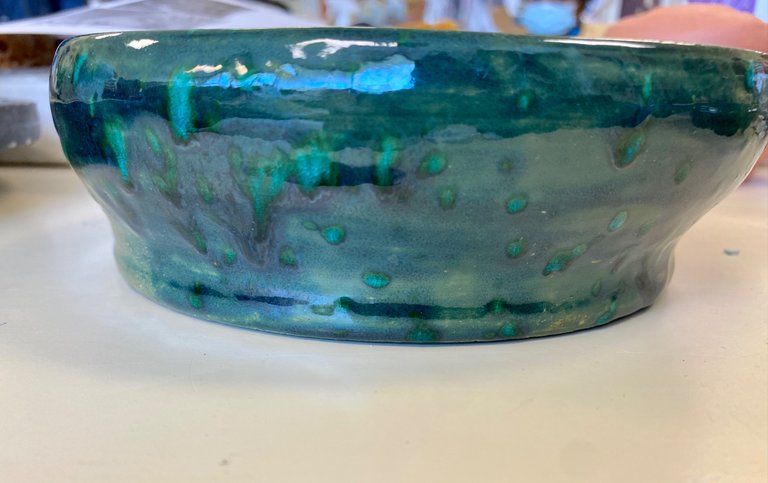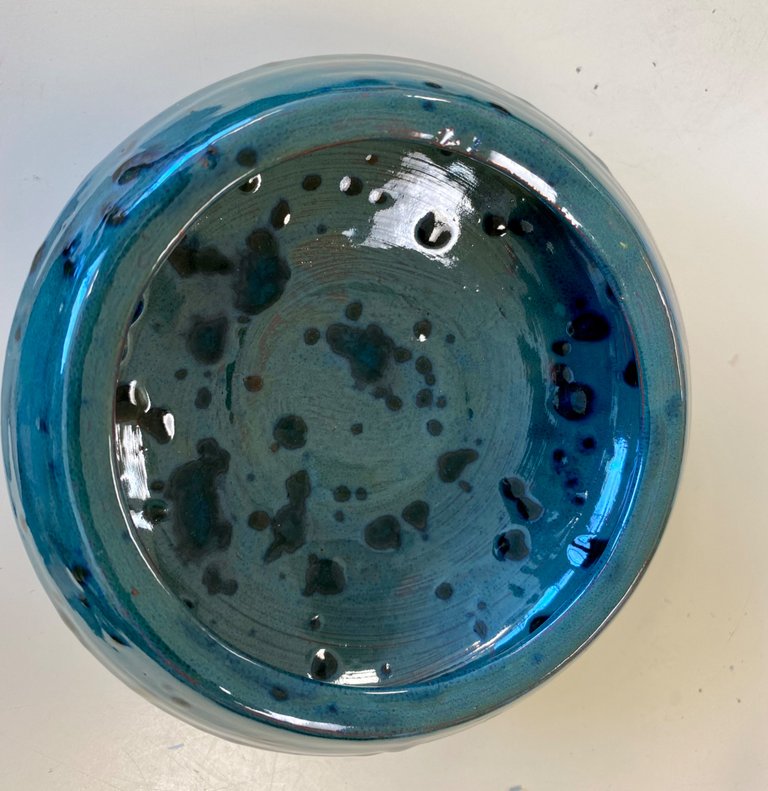The art of pottery takes some time. After starting with a lump of clay, the clay is formed and shaped. Then the clay has to naturally dry until it is leather hard. At that stage, you can trim away excess clay and carve the clay if you prefer. Then the next stage is for the clay to become bone dry. These various stages can take over a week depending on the atmosphere. The next stage is to bisque fire the piece. Once the piece has been bisque fired, then the piece can be glazed dried and fired again in the kiln. I had two pieces to come out of the kiln that went through all of those stages.


This particular glaze had crystals in it that gives this spotted effect. I also glazed two additional pieces, but they were not right. I reglazed those pieces so that they could be fired again in the kiln.


This second piece was fired at the same time, but I used a red clay. One bowl was made using a buff colored clay, and the second dish was created using a red clay. I wanted to see if the same glaze would produce a different color.
It definitely did. If you look at where the crystals were in the glaze, on the buff colored clay, you can see that the crystals melted into a green color. On the second dish, however, the crystals melted into a very dark bluish color.
In the background of the second piece, you can see the red clay that has been bisque fired. That is a portion of a tea pot that I have been working on. The top does not meet my expectations, and I am on my third attempt at making a suitable top for that tea pot.
I have learned from this experiment, that the color of the clay that you begin with is important in the final appearance of your pot.
Enjoy your day.

Love that glaze!! Looks great! (^_^)
Thank you! I love the effect that crystalline glazes produce too.